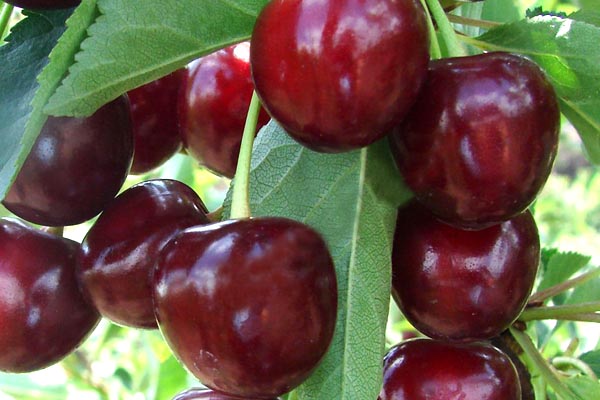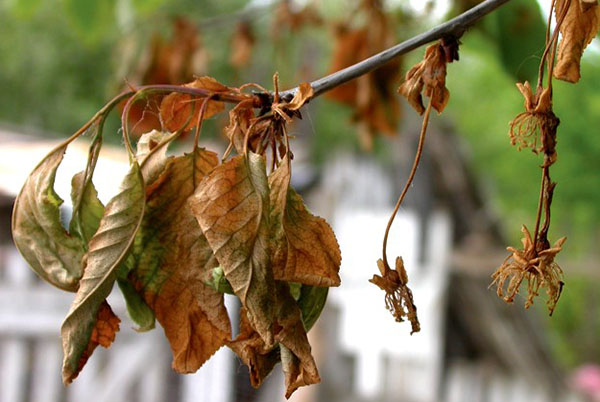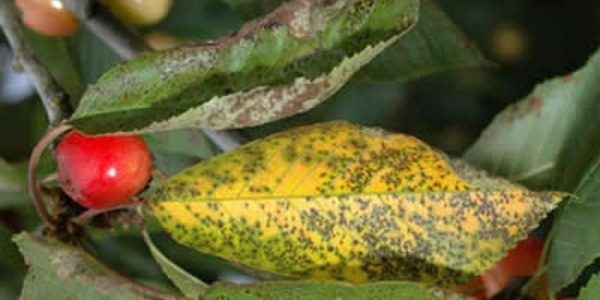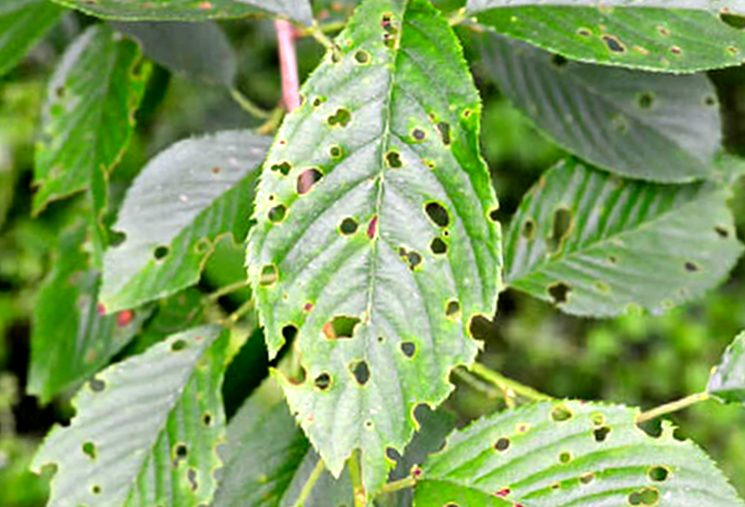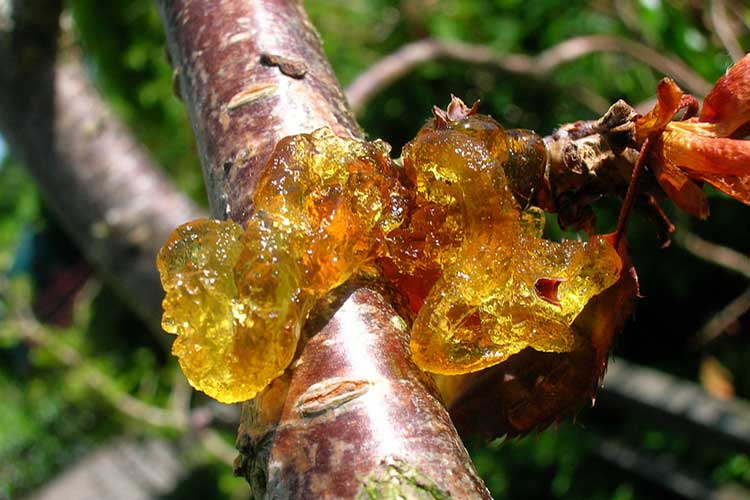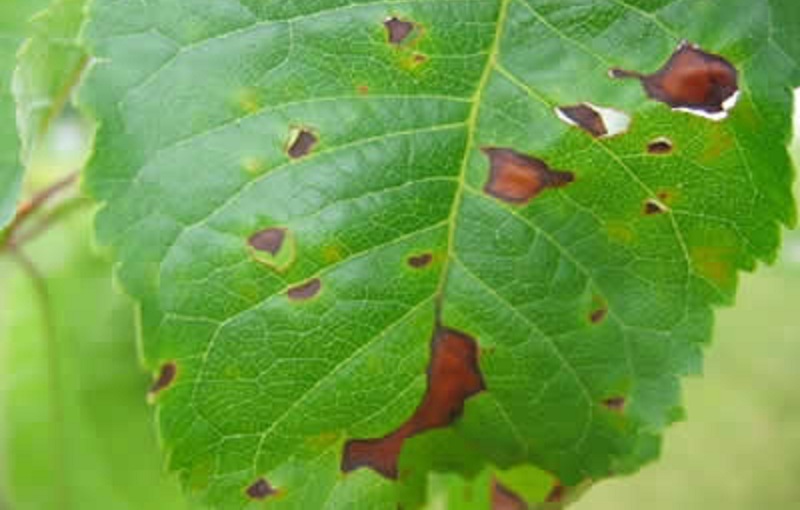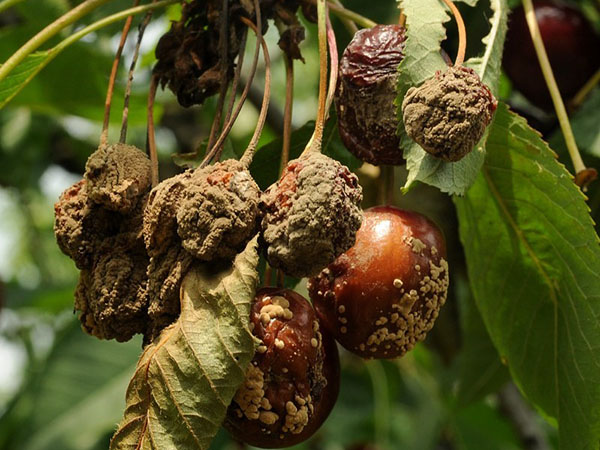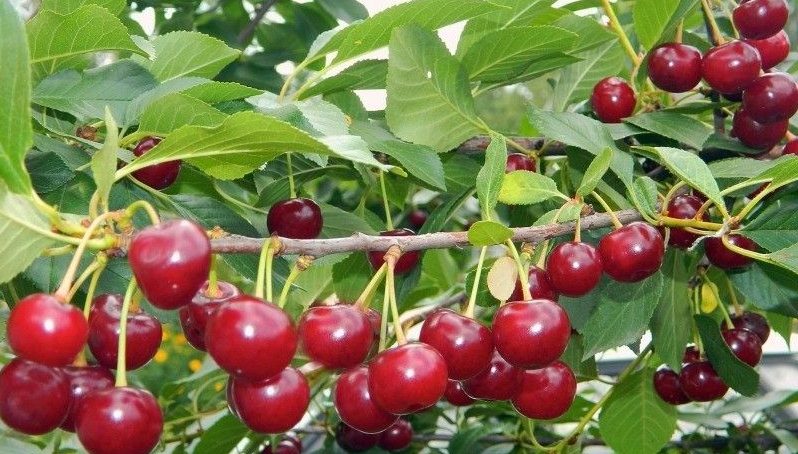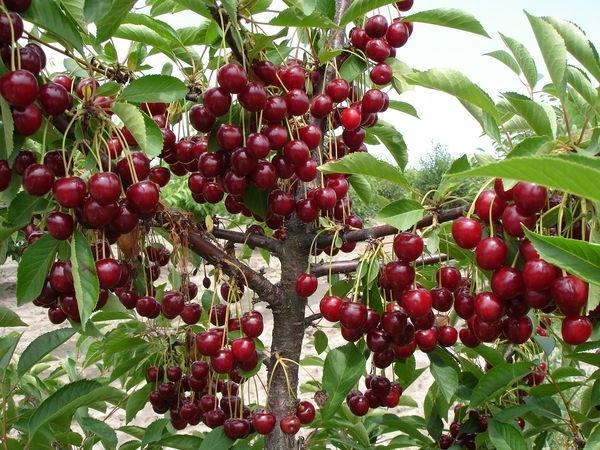Content:
Cherry is a stone fruit crop of the Rosovye family, belonging to the Plum subgenus. On the globe, there are about 150 types of cherry, but all modern cultivated varieties originated from only five: steppe, Magaleb, common cherry, bird cherry (cherry) and felt. Prince Yuri Dolgoruky is considered the ancestor of Moscow's cherry orchards, who planted seedlings of fruit trees from Suzdal in the new capital. For centuries, monks at monasteries have been engaged in the cultivation, reproduction and selection of fruit plantations.
One of the oldest known cherry varieties is Vladimirskaya. The first mentions of it are found at the end of the 16th century. In the late 18th and early to mid-19th centuries, the variety is cultivated on an industrial scale in the Moscow Region and nearby regions. The taste of Vladimirka is recognized as the standard, all modern varieties and hybrids are compared with it. Alas, the varieties of Vladimirka turned out to be highly susceptible to fungal diseases, in winters with little snow, they froze out without shelter during severe frosts. This prompted breeders to develop new productive varieties for the orchards of central Russia.
Popular varieties for the Moscow region
The Moscow region is characterized by unstable weather conditions: sharp temperature drops, dry or rainy summers, severe winters and return frosts. Therefore, important criteria for choosing a variety will be:
- Winter hardiness and frost resistance (up to - 35-38 ° C).
- Immunity to coccomycosis and moniliosis.
- Self-fertility - fruiting without pollinating trees of another variety. Saves space on the garden plot.
- Time of flowering and ripening of the crop.
The varieties that are most adapted to the conditions of the Moscow region are:
- Lyubskaya (Lyubka) is a bushy variety of folk selection, which replaced the Vladimir cherry. It is characterized by self-fertility. Reaches a height of 2.5-2.8 meters, a wide spreading crown does not require frequent pruning. Differs in high yield (up to 50 kg from an adult tree) and early onset of fruiting. With proper care, the first berries are obtained 2-3 years after planting. Collection time - late July-early August. Reaches a maximum yield at 8-10 years of development. The productive life span of a tree is 16-18 years. The most significant drawback of Lyubskoy is considered to be low winter hardiness, sour taste of red cherries and low resistance to viral diseases (requires constant fungicide treatments).
- Zhukovskaya- a variety of ordinary cherry, zoned in the regions of central Russia in 1947. The most tangible plus is high resistance to coccomycosis damage and good yield (up to 35 kg per tree) of large dark red heart-shaped fruits. The height of an adult tree can vary from 1.5 to 3 meters, the life span is up to 20 years. Good fruit production lasts up to 16-18 years. Average frost resistance. The plant is self-fertile and needs pollinators.
- Youth- bred in 1993 with the participation of varieties Vladimirskaya and Lyubskaya. It can appear in the form of a low tree (up to 2.5 meters) or a tree-like spreading bush. The berries are juicy, red, sweet with a slight sourness in taste. Ripen in the second half of July. Fruiting begins at 4-5 years, 10-15 kg annually.The variety is self-fertile, drought-resistant, winter hardiness and resistance to coccomycosis and moniliosis are average.
- Turgenevka - included in the register of breeding achievements of the Russian Federation (1979). The variety was created by careful selection of Zhukovskaya cherry seedlings from free pollination. A medium-sized (3-3.5 meters) tree has a not too thickened crown of a reverse pyramidal shape. Fruiting starts from 4-5 years after planting, up to 25 kg of large (up to 5 grams) burgundy berries from an adult tree. The variety is partially self-fertile, rich yields can be achieved when adjacent to other varieties of cherries. Differs in high winter hardiness and mediocre resistance to fungal diseases of cherry trees.
- Apukhtinskaya- obtained by selecting seedlings from the Lotova variety in the village of Apukhtino. This small tree, up to 2.5 meters, is distinguished by its early maturity. It gives the first berries in 2 years of growth. The variety is late maturing, self-fertile. Flowering occurs in mid-June, berries ripen in late August. Burgundy cherries with a tart bitterness are used for processing. Productivity up to 10 kg per plant. The variety is frost-resistant. There is a high resistance to coccomycosis and other fungal diseases of fruit trees.
- Chocolate girl- zoned in the Central region of the Russian Federation in 1996, obtained from crossing the varieties Black and Lyubskaya. A tree of medium height, up to 2.5 meters with a compact reverse pyramidal crown. The taste of the berries is very sweet, the yield is high (up to 12 kg from one planting). Flowering in the first decade of May, ripening of cherries in the first decade of July. The variety is somoplodious, drought and cold-resistant. Above average susceptible to fungal diseases.
All of these varieties give high yields, subject to proper care, including pruning, watering, fertilizing, preventive treatments with insecticides and fungicides.
Agricultural techniques
Cherry trees thrive on light fertile soils in sunny, wind-protected places. Planting is carried out in the spring, when the soil warms up well, at a distance of 2.5-3 meters from each other.
The tree has a pivotal root system that penetrates into the ground up to 1.5 meters, which excludes planting seedlings with a close occurrence of groundwater. The method tested for such a case is landing in a man-made earthen mound (up to 0.5 meters above the surface).
On heavy soils, the soil from the planting pit is replaced with a nutrient mixture (humus, sand, fertile soil in equal proportions) with the addition of 2-3 tablespoons of superphosphate, 2-3 glasses of wood ash and a glass of crushed eggshell.
Cherries need feeding. Mineral additives are added in early spring. In summer, the strength of the fruit tree is supported with organic fertilizers (humus, slurry, etc.). To prepare for wintering, fertilizing with complex fertilizers is used.
Forming and sanitary pruning is required twice a year. Before winter, all diseased branches, shoots growing inside the crown, damaged and dry branches are cut from the tree. Root growth is removed. In the spring, shoots are pruned, forming a crown.
A feature of the Moscow region is cold winters, so it is advisable to sprinkle the root circle with humus, peat and cover it with straw or branches to avoid freezing of the roots. The situation with fungal and viral diseases in this region is unfavorable. Preventive treatments with fungicides and insecticides are required.
The following procedures must always be carried out:
- Whitewashing of the trunk and skeletal branches (autumn / spring).
- Spraying with fungicides before flowering and after harvest.
- Insecticide treatment prior to budding in spring and as needed.
- Watering with mulching of the trunk circle 3-4 times per season. In dry years, the tree needs moisture-charging watering before winter.
Common diseases
Compliance with all the rules of agricultural technology does not guarantee that the cherry orchard will not be invaded by pests, and the trees will not get sick. With the help of preventive actions and treatments, it is possible to minimize the likelihood of the appearance of pathogens of dangerous diseases, but not completely eliminate the problem. It is very important to monitor the state of fruit plantations in the garden, so that when the first signs of the disease appear, the correct treatment can be started immediately.
The main diseases of cherry in the Moscow region and their treatment:
Moniliosis
A very common fungal disease of cherry. The spores of the fungus Monilia cinerea are carried by the wind.
A favorable environment for the development of moniliosis is dampness and coolness. Most often, outbreaks of the disease are observed during the period of rains and cold snaps. The high risk period is spring and late summer. Spores can successfully overwinter in diseased parts of the trunk, bark and fallen leaves.
Young shoots are the first to suffer from moniliosis. The infection spreads rapidly through the tree.
Signs:
- The branches begin to dry, as if scorched by the sun.
- In a flowering tree, flowers and buds dry out and fall, in a fruiting tree, berries.
- The bark begins to crack, and ugly outgrowths appear on the trunk.
- Stem cracks rot, become stained, and gum flow may begin.
Control methods:
- Planting varieties with high disease resistance.
- Sanitary pruning of the crown, burning of fallen leaves, whitewashing of the trunk.
- Removal of all dying branches (cut or cut to living tissue).
- Cherry treatment with fungicides (Gamair, Horus, Rovral), copper preparations (copper sulfate).
If the disease manifests itself on one plant, all stone fruit crops in the garden (apple, pear, plum) are at risk. Treatment with copper-containing preparations should affect all fruit trees and be not one-time, but systematic.
Coccomycosis
Along with moniliosis, one of the largest diseases of stone fruit crops in the Middle Lane. All the fault of the microspores of the fungus Blumeriella jaapii, carried by the wind during the spring thaw. The pathogen slumbers in the upper layers of the soil under last year's foliage, waiting for an opportunity.
During the growing season, up to 6-8 generations of coccomycosis fungi mature and scatter in the garden. Warm weather and high humidity stimulate the breeding process. The disease moves along the tree from bottom to top, quickly occupying new areas, being transmitted from diseased leaves to healthy shoots.
Signs:
- In the initial stage, the lesion does not attract much attention. There is a slight mottling of individual leaves.
- Red dots on the leaves gradually spread, increasing in size. The core of the blotch turns brown, the back side becomes covered with gray growths, and spores ripen on cherry leaves.
- Sick leaves turn yellow and crumble prematurely. By the end of summer, the infected plant completely discards its leaves and fruits.
The infected plant does not have time to accumulate a sufficient supply of nutrients by winter. It becomes vulnerable to defeat by other ailments. Winter hardiness decreases and the fruit crop dies.
Control methods:
- Planting varieties of young selection resistant to fungal spores.
- Autumn collection and destruction of volunteers and leaves.
- Digging the upper layers of the soil under the trees in spring and autumn.
- Before the flower buds open and after fruit set, fruit plantings are sprayed with a solution of Bordeaux liquid.
- After harvesting, the tree is sprayed with a solution of copper sulfate.
If you do not start the treatment of the disease in a timely manner, then it will not only leave the gardener without a good harvest, but in a few years will completely destroy the entire garden.
Clasterosporium disease (Hole spot)
Cherry clasterosporium disease is caused by the harmful fungus Clasterosporium carpophilum. Its spores find refuge in crevices in tree bark and under fallen leaves. The optimum temperature for the growth of the fungus is + 20 ° C in combination with high humidity. Spores are carried by the wind and rain drops flowing from infected leaves.
Signs:
- The leaf blades are showered with tiny reddish-brown dots that grow in diameter. Holes form in the affected areas within 2 weeks.
- In the later stages of the disease, cracking of individual sections of the bark (the formation of growths) occurs.
- Sore wounds leak with tree sap, gum leakage from some buds is observed. Flowers fall.
- With a serious injury, foliage falls off the tree.
Control measures:
- Compliance with agricultural technology.
- As a treatment, measures similar to those for combating other fungal diseases of cherries are used.
Anthracnose
A disease carried by spores of the fungus Gloeosporium ampelophagum. It is ubiquitous, thrives on many vegetable and fruit crops. Cherries are characterized by berry damage.
Signs:
- Pigmentation on fruits with their subsequent decay.
- Light specks appear on the berries. The spots increase in diameter, become dark and hard. The fruit dries up, covered with a bloom of ripe fungal spores.
Control measures:
- Destruction of infected fruits and carrion.
- Autumn treatment with urea solution (0.5 kg per bucket of water) or Bordeaux liquid solution.
- Spraying with a solution of the preparation Polyram (1 sachet per bucket of water) or other fungicides containing it before bud dissolution and after the formation of ovaries. With obvious signs of the disease, a third treatment is carried out, 2 weeks after the second.
Cherry anthracnose actively devours the crop, and the fight against it is simply necessary. If it was not possible to preserve the fruits in the current year, then it is important to carry out all the treatments on time - to save the harvests of future years.
Gum therapy
Gum removal, or gommosis, is a resinous discharge on the trunk and branches of stone fruit trees. Hommosis precedes the death of the part of the plant where it appeared.
Signs: Drops of sticky translucent resin on the trunk of the cherry.
Cherry fumigation can be prevented by observing the rules of agricultural cultivation. There can be many reasons, the main one being deep injuries (cracks, cuts, breaks) of the trunk. Sticky tree sap (gum) flows out of the damaged area. It is recommended to cover up all "problem" places with garden pitch.
It is advisable to clean the affected areas of the trunk, removing all tissues to healthy wood, disinfect and process with garden varnish. The procedure is performed after the completion of the spring sap flow.
Rust
Rust on plants in the garden is the spread of the harmful fungus Thekopsora padi. Conifers are most intensely affected. Rye quickly spreads throughout the orchard.
Disease manifestations: rusty red-orange spots appear on the leaves. The spores of the fungus ripen in the affected areas. Leaves die off and fall off.
How to cure cherries: all diseased shoots and leaves are removed and the plantings are treated with copper-containing preparations or a solution of colloidal sulfur (according to the instructions). Effective fungicides for cherry processing: topaz, Bordeaux liquid, falcon, super alto.
Scab
The scab is caused by a fungus - the causative agent of Karaculinia cerasi. The peak of its distribution falls on the first warm spring months.
Distinctive features: yellow, alternating with brown-brown, the color of spotty rashes on the leaves. The spots are spreading, covering more and more areas on the plant. Move on to the trunk and fruit. They cause cracking of tissues, gum flow, decay. With severe infection, the cherry sheds its leaves and fruits.
The most effective remedy for cherry scab is prevention:
Spraying with nitrafen (nitrophene) solution. The drug has a very broad spectrum of action with long decay times. For preventive purposes, treatments should be done annually in late autumn or early spring, before the buds open. They spray not only the branches, but also the soil surface in the near-trunk circle.
If the fruit tree is infected with scab, you can try to get rid of the problem using folk methods: infusion of garlic (200 g of garlic-oil infusion per bucket of water), mustard solution (4 tablespoons of powder per bucket of water). This will slow down the course of the disease, but the cherry is completely cured by copper-containing preparations or fungicides.
The most reliable and safe way for human health to deal with cherry ailments is prevention. Up to 80% of all fungal diseases overwinter in fallen leaves and autumn mulch, old bark and dry branches, which must be burned. It is necessary to deprive the infection of the nutrient medium created by damage to the wood of the fruit tree by treating them with garden pitch. It is important to strengthen the cherry's immune system with proper feeding and biostimulant treatments.
Along with popular ones, it should be noted separately new varieties of cherries with high resistance to coccomycosis and moniliosis: Rannyaya Yagunova, Tamaris, Pamyat Yenikeeva, Bulatnikovskaya, Antratsitovaya, Malinovka, Assol, Kharitonovskaya, Nord Star. For the earliest possible harvest from disease-resistant crops, grafting of varietal cuttings on existing rootstocks of cherry, plum, blackthorn or sweet cherry is recommended.
